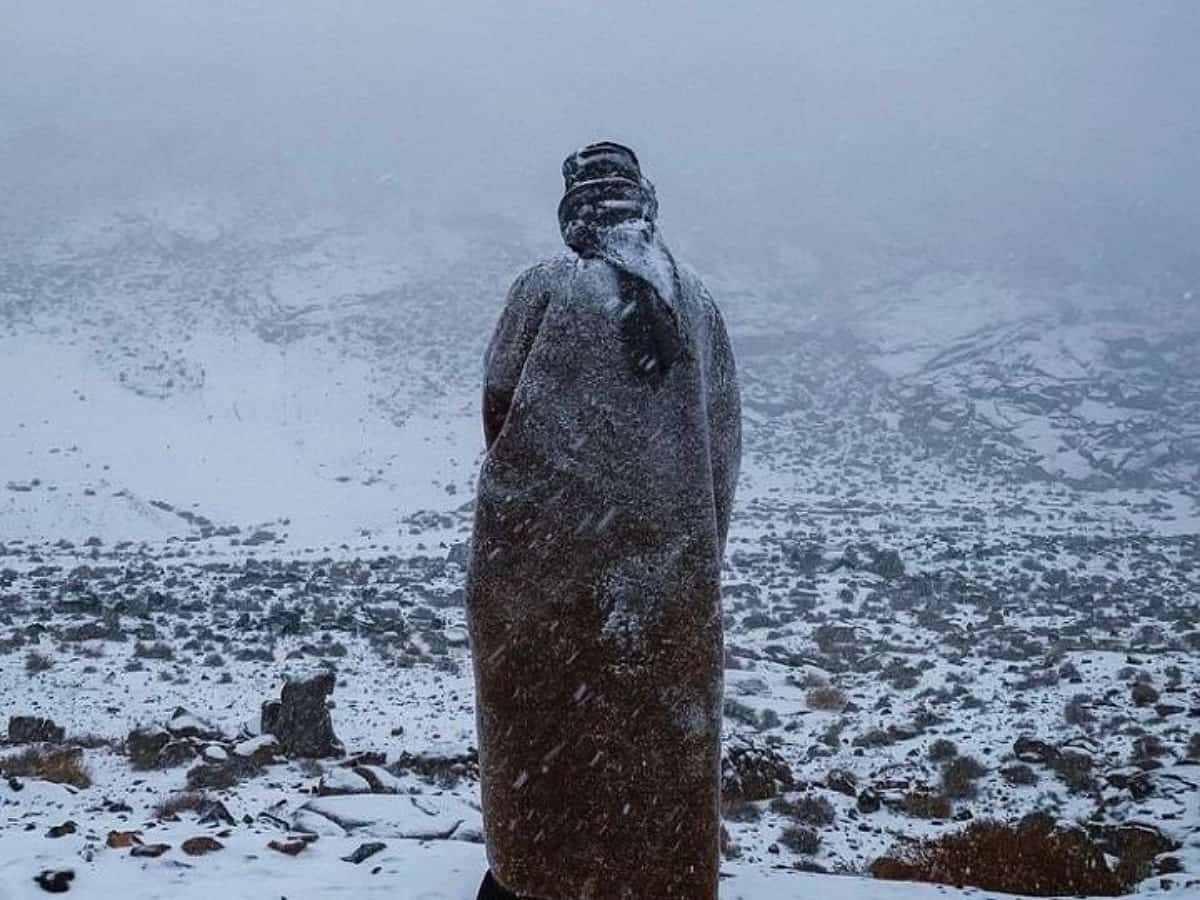
Riyadh: The Kingdom of Saudi Arabia’s northwestern city of Tabuk welcomed the first snowfall of the year by performing a traditional dance—Al-Dahha, the video of which have been circulated widely on social media.
The video shows the people of the Tabuk region celebrating the snowfall in their own way, as some people performed the famous traditional dance of the north, to celebrate the snow that covered the slopes of Jabal Al Lawz after a wave of snow that swept the country.
In the video, a number of men are shown standing in a row, clapping and singing traditional songs, while one of them led the Al-Dahha dance as usual, where he danced among the performers, and in the old days the poet of the tribe was among the crowd.
The official spokesman for the National Center of Meteorology, Hussain Al-Qahtani, said that the Kingdom of Saudi Arabia recorded the lowest temperatures, which reached 1 below zero, in the current first cold wave in the first quarter of winter. As a result, snow fell on the mountainous heights of the Tabuk region, anticipating the continuation of low temperatures during the winter season.
Jabal Al-Lawz is among a mountain range located in northwest Saudi Arabia near the Jordanian border in the Tabuk region, about 200 km northwest of the city of Tabuk. It is called Jabal Al-Lawz because of the almond trees in it, where almond is called Lawz in the Arabic language.
People have been flocking to Jabal Al Lawz since January 1, when snow began to fall in many areas.
Last year, snow-blanketed sections of the kingdom’s northern cities. The last time Saudi Arabia saw this much snow was in 2018 when residents and visitors enjoyed snow sports such as sleigh rides and snowball battles.
History of the traditional Al-Dahha dance
The history of the traditional Al-Dahha dance goes back to the distant time, as it was adopted in ancient times during wars to frighten enemies and drive them away until it was known as the horror dance, as well as to signify the defeat of enemies and celebrate victory.
The traditional Dahha dance continued to be performed to express the joys. It is practised on occasions, especially weddings, and it has its own rules and method, as men gather in one or two rows, clap and sing, while a man dances in front of them with a sword or stick, called “Al Hashi.”
While the sounds made by the men participating in it are very similar to the roar of lions or the roar of camels, and this dance is unique in that it combines poetry, play and war dances together.
It is a type of folklore that the Bedouin tribes and clans are famous for in Jordan, the Badia regions in Syria, Iraq and Palestine, and in some Gulf countries such as Saudi Arabia and Kuwait for hundreds of years.

